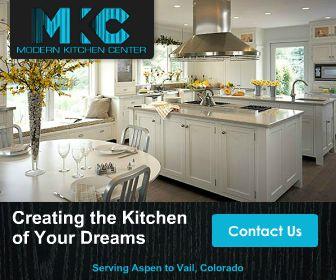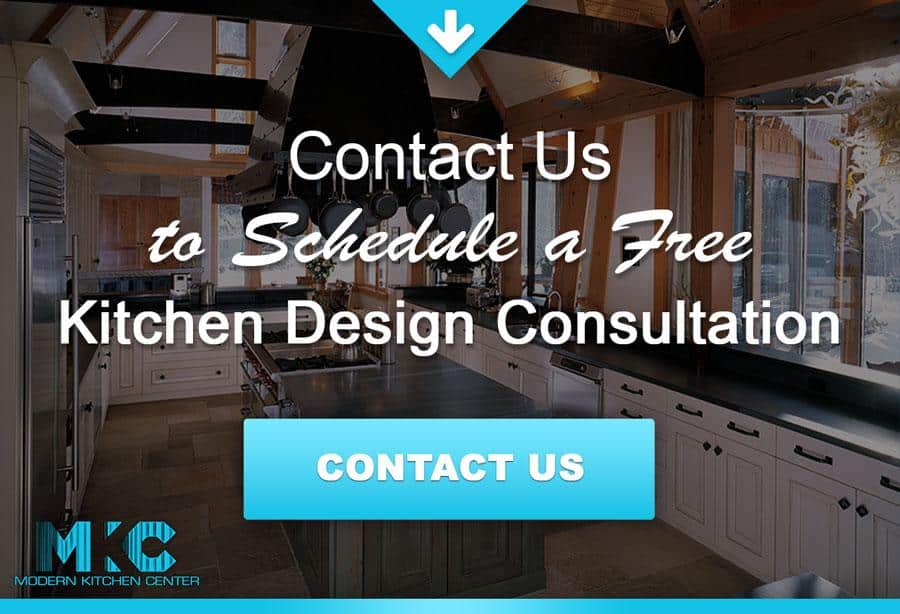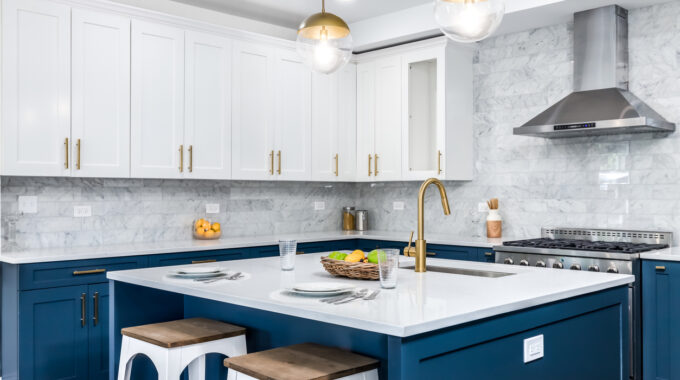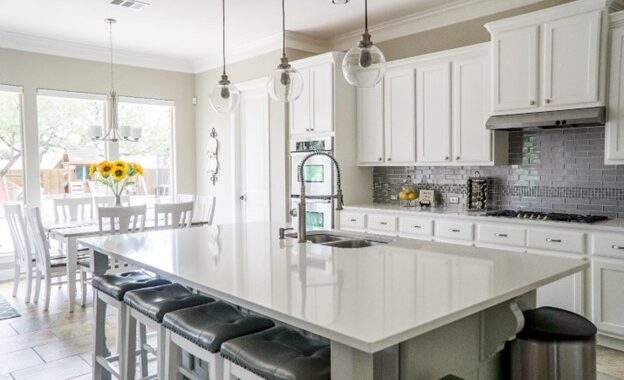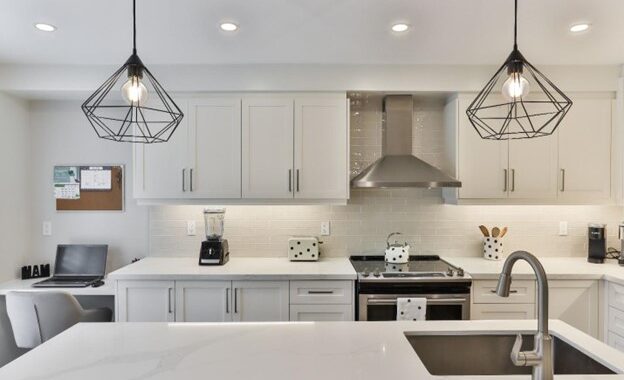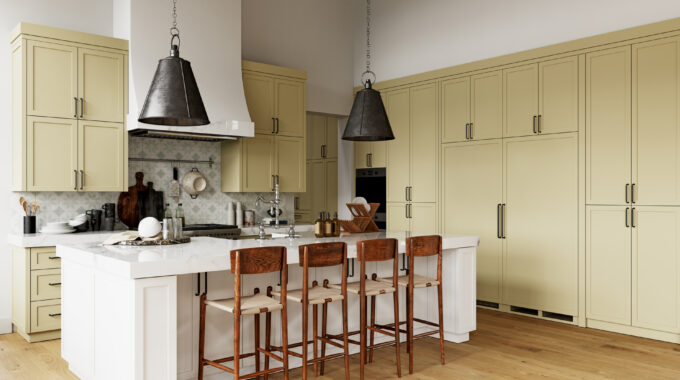
Mastering the Mix: Blending Traditional and Modern Elements in Your Kitchen Design
Have you ever wondered how to incorporate both classic and modern vibes in your kitchen? Well, you’re in the right place!
Let’s talk about kitchen design and unveil the possibilities that arise when tradition and modernity come together in perfect harmony.
The Importance of Kitchen Design
Your kitchen isn’t just a place to cook; it’s the heart of your home. The design of this space plays a crucial role in enhancing daily activities, fostering family connections, and even influencing your mood.
A well-thought-out kitchen design can transform mundane tasks into enjoyable experiences, making it essential to consider functionality and aesthetics. Whether you’re a culinary enthusiast or appreciate a cozy atmosphere, how your kitchen is designed can greatly impact your daily life.
Blending Traditional and Modern Elements
Traditionally, kitchens leaned heavily towards classic or contemporary styles, but why choose one when you can have the best of both worlds?
The concept of blending traditional and modern elements in kitchen design involves creating a space that combines the warmth and familiarity of timeless features with the sleek efficiency of modern aesthetics.
It’s about finding a balance that reflects your personal taste and accommodates the practical needs of a modern lifestyle. Picture vintage charm meeting cutting-edge innovation – that’s the beauty of the blend!
Significance of Achieving a Harmonious Kitchen Design
Imagine walking into your kitchen, and it feels like everything just falls into place effortlessly – that’s the magic of a harmonious kitchen design. When designing your kitchen space, the focus is not just on aesthetics.
A well-balanced design ensures that every element complements the others, resulting in an inviting environment. This harmony translates into a positive impact on your overall well-being, making your kitchen not only a functional space but also a retreat where you can unwind and connect with your surroundings.
Understanding Traditional and Modern Kitchen Design
In kitchen design, two styles have stood the test of time—traditional and modern. Each comes with its own sensibilities and essentials, creating a spectrum of possibilities for homeowners looking to infuse their kitchens with character and functionality.
Exploring Traditional Kitchen Design Principles
Classic Materials and Color Schemes
Traditional kitchen design is characterized by a warm and inviting atmosphere that often relies on classic materials and color palettes. Wood, stone, and natural materials take center stage, evoking a sense of timelessness.
Warm tones such as creams, browns, and muted hues dominate traditional kitchens, creating a cozy and comforting ambiance. The emphasis on craftsmanship and intricate detailing in cabinetry and furniture further enhances the traditional aesthetic.
Timeless Architectural Features
Traditional kitchens often showcase timeless architectural features that add character and charm. Raised-panel cabinet doors, ornate moldings, and detailed trim work are staples of traditional design. These features contribute to a sense of craftsmanship and a connection to historical design elements.
Additionally, traditional kitchens may incorporate features like arched doorways, farmhouse sinks, and decorative lighting fixtures to evoke a sense of nostalgia and classic elegance.
Modern Kitchen Design Essentials
Minimalist Aesthetics
In stark contrast to the ornate nature of traditional design, modern kitchens embrace minimalist aesthetics. Clean lines, simple geometric shapes, and a focus on functionality define modern design principles.
The color palette tends to be more neutral with whites, grays, and blacks dominating the scene. The minimalist design seeks to create an uncluttered and streamlined look, emphasizing open spaces and a sense of airiness. Sleek, handleless cabinets and a lack of excessive ornamentation contribute to the modern kitchen’s understated elegance.
Innovative Materials and Technologies
Modern kitchen design thrives on innovation, incorporating cutting-edge materials and technologies. High-gloss finishes, stainless steel appliances, and engineered stone countertops are common elements in modern kitchens.
The use of innovative materials not only enhances the visual appeal but also contributes to the durability and functionality of the space.
Smart technologies, such as touchless faucets, integrated appliances, and advanced lighting systems, bring convenience and efficiency to modern kitchens, aligning them with the demands of contemporary living.
Blending Tradition with Modernity
Traditional kitchens often embrace rich wood finishes, ornate details, and a warm color palette, creating a cozy and welcoming atmosphere. On the other hand, modern kitchens prioritize clean lines, minimalistic aesthetics, and the integration of cutting-edge appliances for a streamlined and efficient space.
Balancing these contrasting styles requires a keen eye for design, blending elements seamlessly to create a harmonious kitchen that suits your lifestyle. Beyond aesthetics, practical considerations such as storage solutions, lighting, and workflow optimization play a crucial role in both traditional and modern kitchen designs.
As you bring your ideal kitchen to life, the fusion of tradition and modernity offers a unique opportunity to create a space that not only stands the test of time but also caters to the demands of contemporary living.
In essence, understanding traditional and modern kitchen design involves appreciating the distinctive principles that define each style.
Whether you’re drawn to the timeless elegance of classic materials and symmetrical layouts or captivated by the sleek lines and innovative technologies of contemporary design, your kitchen choices reflect not only your personal taste but also the functionality you seek.
Blending the Traditional and Modern
When it comes to kitchen design, the art lies in identifying common ground between these seemingly disparate styles, creating a space where the warmth of tradition converges with the efficiency of modernity.
Identifying Common Ground between Traditional and Modern Design:
The key to a successful fusion is recognizing shared principles that transcend temporal boundaries. Both traditional and modern kitchens prioritize functionality, albeit in different ways.
While traditional kitchens often emphasize intricate details, rich wood finishes, and a warm color palette, modern kitchens lean towards minimalism, clean lines, and cutting-edge technologies.
Identifying commonalities, such as the pursuit of optimal functionality and a focus on practicality, provides a solid foundation for the fusion approach.
Case Studies of Successful Kitchen Designs that Blend Elements:
Exploring case studies of kitchens that successfully integrate traditional and modern elements can offer valuable insights. Architects and designers have embraced this fusion approach, creating spaces that seamlessly marry the charm of classic design with the efficiency of contemporary innovations.
These case studies showcase how thoughtful selection and placement of traditional and modern elements can create a kitchen that transcends stylistic boundaries.
Tips for Achieving a Cohesive Look:
Balancing Color Palettes
A fusion kitchen requires a thoughtful balance of color palettes. Traditional kitchens often feature warm, earthy tones, while modern kitchens may lean towards neutral or bold hues.
To strike a harmonious balance, consider selecting a neutral base and infusing pops of traditional colors through accents, such as kitchenware, backsplashes, or even a statement piece.
Integrating Traditional and Modern Materials
Material selection is pivotal in bridging the gap between traditional and modern design.
For instance, combining classic wood finishes with sleek stainless steel appliances or incorporating traditional stone countertops alongside minimalist cabinetry can create a visually appealing contrast.
The juxtaposition of materials adds depth and interest to the kitchen while maintaining a cohesive overall look.
The fusion approach to kitchen design represents a captivating intersection of tradition and modernity.
By identifying common ground, studying successful case studies, and implementing thoughtful tips for cohesion, one can craft a kitchen that seamlessly combines tradition’s timeless charm with the modern era’s cutting-edge efficiency.
This nuanced approach creates a visually stunning space and ensures that the kitchen is a functional and harmonious hub for everyday living.
The Role of Technology in Modern Kitchen Design
In the ever-evolving kitchen design landscape, technology has emerged as a transformative force, reshaping how we interact with and perceive our culinary spaces.
From innovative appliances to smart home integration, the infusion of technology into modern kitchen design has enhanced efficiency and ushered in a new era of convenience and sophistication.
Overview of Technological Advancements in Kitchen Appliances
The heartbeat of any modern kitchen lies in its appliances, and recent technological advancements have elevated these essentials to unprecedented functionality and efficiency.
High-tech refrigerators now come equipped with touchscreens for digital grocery management, allowing users to create shopping lists, monitor food expiration dates, and even order groceries directly from the kitchen.
Smart ovens and stovetops, armed with sensors and connectivity, offer precise temperature control and the ability to monitor cooking remotely through mobile applications.
In addition to these smart appliances, there has been a surge in the development of eco-friendly technologies.
Energy-efficient dishwashers, induction cooktops, and water-saving faucets not only contribute to a sustainable kitchen but also align with the emphasis on environmental responsibility.
Smart Home Integration for a Modern Touch
The concept of a smart home extends into the modern kitchen, where connectivity and automation redefine the cooking experience. Integration with virtual assistants, such as Amazon’s Alexa or Google Assistant, enables hands-free control of various kitchen functions.
Voice commands can adjust lighting, set cooking timers, or even preheat the oven, allowing for a more streamlined and efficient cooking process.
Smart refrigerators take center stage in connected kitchens, featuring built-in cameras that allow users to check the contents remotely, suggest recipes based on available ingredients, and even provide real-time updates on expiration dates.
The ability to control kitchen appliances through smartphone apps adds an unprecedented level of flexibility and convenience to the modern culinary space.
Balancing Technology with Traditional Design Elements
While integrating technology brings undeniable advantages to the modern kitchen, striking a balance with traditional design elements is essential for creating a harmonious and inviting space.
It is crucial to avoid a sterile, overly futuristic aesthetic and instead infuse warmth and character through thoughtful design choices.
One approach is to conceal high-tech appliances within cabinetry, maintaining a sleek and uncluttered appearance while preserving the overall aesthetic coherence.
Traditional materials such as wood, stone, or even vintage-inspired fixtures can be incorporated to soften the high-tech edge, creating a kitchen that seamlessly marries the past with the future.
The role of technology in modern kitchen design is transformative, offering convenience, efficiency, and connectivity like never before. As we embrace the era of smart homes and innovative appliances, the challenge lies in integrating these technological marvels while preserving the timeless charm of traditional design elements.
By achieving a delicate balance, today’s kitchens can be both cutting-edge and inviting, creating a space where technology enhances the culinary experience without overshadowing the enduring appeal of thoughtful design.
Practical Considerations for Mastering the Mix in Kitchen Design
Budgeting for a Blended Kitchen Design
Integrating traditional and modern elements in a kitchen requires a well-thought-out budget. Prioritize essential components and allocate resources accordingly to balance quality and cost-effectiveness.
Consider investing in durable materials for long-term use while being mindful of cost-saving options that align with the overall design vision.
Working with a Professional Designer
Collaborating with a professional designer can be instrumental in navigating the complexities of blending traditional and modern styles. Designers bring expertise in balancing aesthetics, functionality, and budget constraints.
They can guide homeowners in making informed decisions, ensuring a cohesive and visually pleasing result. Communication is key; clearly articulate your preferences and priorities to the designer for a personalized and successful design journey.
DIY Tips for Homeowners
For those inclined towards a hands-on approach, there are several DIY tips to achieve a blended kitchen design.
- Research and gather inspiration for blended kitchen designs.
- Make small but impactful changes like updating hardware or lighting.
- Consider DIY upcycling for existing furniture or fixtures.
- Mix contrasting textures, such as wood and metal, for visual appeal.
- Infuse personalized touches through unique DIY projects or customizations.
- Undertake functional DIY projects to enhance both aesthetics and functionality.
Final Thoughts on Blending Traditional Kitchen Design Elements with Modern Design
Striking a balance between traditional and modern elements in kitchen design requires a thoughtful approach. We recommend balancing color palettes, integrating different materials, and making small but impactful changes.
Whether through the incorporation of contrasting textures or the infusion of personalized touches, the key lies in creating a space that marries the timeless charm of tradition with the sleek innovation of the modern era.
As you design your kitchen, we encourage you to embrace experimentation. The beauty of blending styles lies in the freedom to express your unique taste and personality.
Don’t hesitate to explore DIY projects, play with textures, and infuse personal touches that resonate with your vision. Your kitchen is a canvas, and blending traditional and modern elements provides an exciting opportunity for creative expression.
For those seeking expert guidance and advice on achieving the perfect blend in their kitchen design, we invite you to visit the Modern Kitchen Center. Our team of professionals is dedicated to helping you navigate the complexities of design, offering insights, and providing solutions tailored to your preferences.
Visit us today and transform your culinary space into a space that pays tribute to tradition and modernity.



